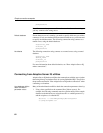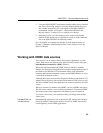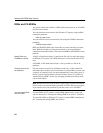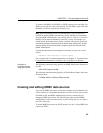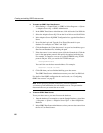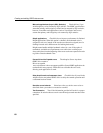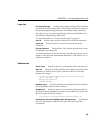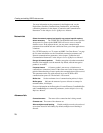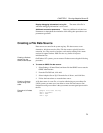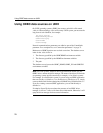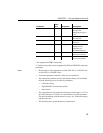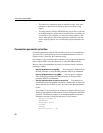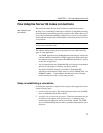
Creating and editing ODBC data sources
70
For more information on the parameters in the Database tab, see the
EngineName, StartLine, DatabaseName, DatabaseFile, and AutoStop
connection parameters in the chapter “Connection and Communication
Parameters” in the Adaptive Server IQ Reference Manual.
Network tab
Select the network protocol and specify any protocol specific options
where necessary The TCP/IP, IPX, and NetBIOS check boxes specifies
what protocol or protocols the ODBC DSN will use to access a network
database server. In the adjacent boxes, you may enter communication
parameters that establish and tune connections from your client application to
a database.
For a TCP/IP example, see “To create an ODBC User Data Source:” on page
66. For more information see the CommLinks connection parameter, and
Network communications parameters, in the chapter “Connection and
Communication Parameters” in the Adaptive Server IQ Reference Manual.
Encrypt all network packets Enables encryption of packets transmitted
from the client machine over the network. By default, network encryption
packets is set to OFF.
Liveness timeout A liveness packet is sent across a client/server to
confirm that a connection is intact. If the client runs for the liveness timeout
period without detecting a liveness packet, the communication will be severed.
This parameter works only with network server and TCP/IP or IPX
communications protocols. The default is 120 seconds.
Buffer size Set the maximum size of communication packets, in bytes.
Buffer space Indicates the amount of space to allocate on startup for
network buffers, in kilobytes.
For more information on the Encryption, LivenessTimeout, CommBufferSize
and CommBufferSpace connection parameters, see the Adaptive Server IQ
Reference Manual.
Advanced tab
Connection name The name of the connection that is being created.
Character set The name of the character set.
Allow multiple record fetching Enables multiple records to be retrieved
at one time instead of individually. By default, multiple record fetching is
allowed.



